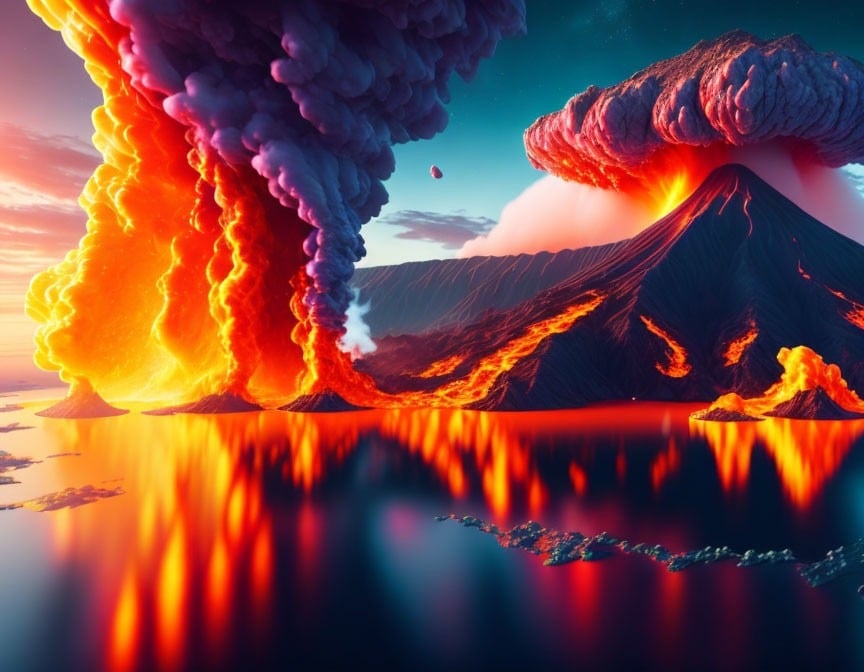Hawaii is a land of historically epic beauty. It is a timeless land.in Prehistory, the nature in Hawaii was completely untouched by humans and only lost birds and plants inhabited the island chain. Hawaii is a very young cluster of islands with a very short terrestrial history; the oldest islands were formed five to six million years ago and is unusual because it is a hotspot far away from the tectonic plate boundary (~2,000 miles away). Hawaii is the world’s youngest island chain!
The early history of the settlement of the Hawaiian Islands is relatively unknown, but by combining myth, logic, and the current scientific analyses we can get a good idea of how the island populations evolved and migrated and also how plant and animals species developed and assimilated alongside humans. Hawaii’s modern identity is a reflection of this unique, layered, and multifaceted history. Shaped by colonization and assimilation into the Western European cultures and the United States, Hawaii is a unique blend of native and invasive species, and layers of settlement of Polynesians, westerners, and labor forces from around the world.
Polynesian Mythology of Hawaii
The Polynesian’s have a rich mythology surrounding the formation and settlement of the islands of Hawaii, but it is important to note that these myths evolved over time and were heavily influenced by the arrival of Christianity in the 18th century. The history of the evolution of Hawaii is truly fascinating, matched only by their mythological evolution. Hawaiians have a pantheon of gods and goddesses, but the some of major deities are Kane, Kanaloa, Lono, Ku, Maui, and Pele. Hawaiian mythology also focused heavily on mana, or the interconnection between all beings and the natural world, similar to the concept of a ‘holy spirit’.
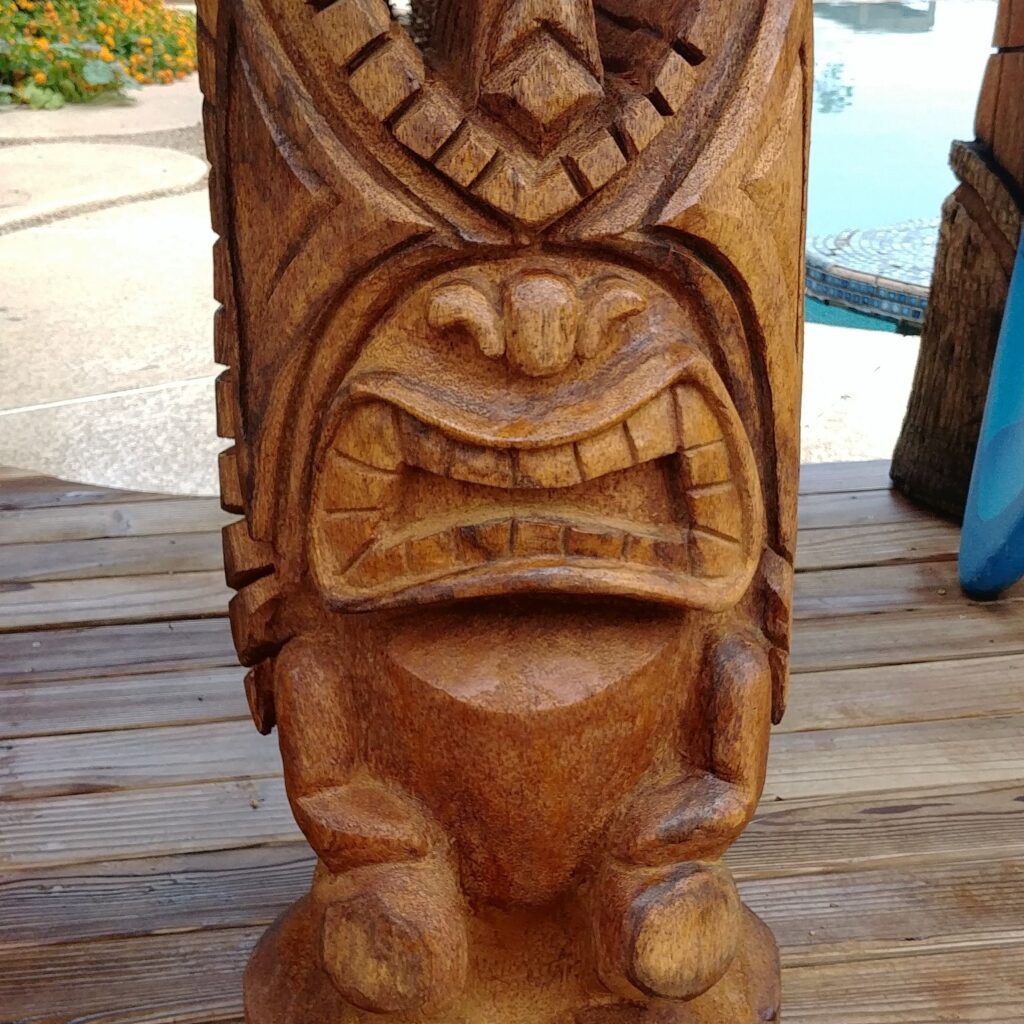
The primary creation myth involves Kane Milohai is the god of creation. Kane is associated with the sun, fresh water, agriculture, forests, and procreation. His origin story is part of the best known creation myth, the Kumulipo chant, where the primordial first beings known as the Po’ele emerged from darkness to create other beings and gods; the world was created gradually, starting with the most basic of organisms and moved onto more complexity with insects, animals, birds, and eventually humans. In the myth, Kane and Kamala descended from the heavens to create and this led to the separation between the Earth and the sky or Papa and Wakea. It represents the division between the divine masculine and feminine and the creation of fertile ground where life could flourish. Kane is not only the creator god, but represents Hawaiian values, especially fertility.

Another creation myth involves Maui, known for his strength and supernatural abilities. One day, Maui set out on a fishing expedition with his brothers. They cast their lines into the ocean, but Maui’s line, baited with a sacred bird, got caught on something unimaginably massive beneath the water. As Maui and his brothers struggled to reel in their catch, it became apparent that they had hooked the land itself. With his incredible strength, Maui transformed into a giant and exerted all his power to pull up the land from the ocean depths. The land rose out of the water, and as Maui’s efforts continued, the individual Hawaiian Islands began to take shape. As the islands emerged, Maui used his knowledge of the natural world to shape and mold them, creating the mountains, valleys, and lush landscapes that make up the Hawaiian archipelago. He also shaped the rivers and waterways, ensuring that life could flourish on the newly formed islands.

A final example of the beautiful Hawaiian cultural myth is the story of Pele, who is said to have created the Hawaiian Islands. Halemaʻumaʻu in the Kilauea volcano on the island of Hawaii is where she is known to reside and is the goddess of volcanos and fire. Many Hawaiians believe that there is a family of gods that inhabit Kilauea and Pele is one of the sisters that controls the flow of lava. Legend told that Pele herself journeyed on her canoe from the island of Tahiti to Hawaiʻi. When on her journey to Hawaii from Tahiti, it was said she tried to create her fires on different islands, but her sister, Nāmaka, was chasing her, wanting to put an end to her. In the end, the two sisters fought each other and Pele was killed. With this happening, her body was destroyed but her spirit lives in Halemaʻumaʻu on Kilauea. They say, “Her body is the lava and steam that comes from the volcano. She can also change form, appearing as a white dog, old woman, or beautiful young woman.”
The gods each had specific roles in the creation and maintenance of the world. Lono was one of the original gods of the universe and was known as the god of music, peace, and agriculture and would bring rain during the 4 month rainy season which was also a season of peace for Hawaiians. Ku was a feather god that demanded human sacrifice and represented war, politics, and sorcery. Kanaloa is a squid or octopus goddess that complimented Kane and was considered the counter-opposite to the creator-sun god, representing shadow, underworld, magic, and the ocean.
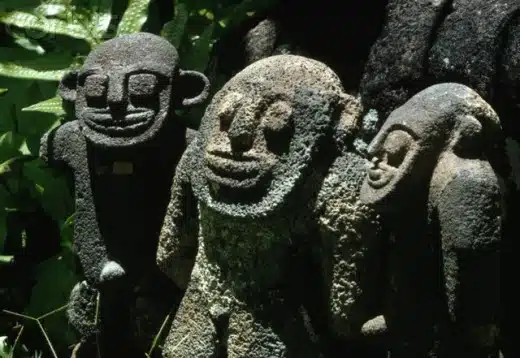
In myth, the Polynesian’s were not the first islanders. The Menehune are a mythical race of dwarves, or little people, that were believed to be responsible for many of the various ancient structures on Hawaii. While the Menehune are generally considered benevolent beings, they are also known for their mischievous behavior. According to legends, the Menehune live in remote and hidden areas of the Hawaiian Islands, such as deep in the forests or in secluded valleys. These secretive locations are believed to be the reason why they are rarely seen by humans. They are said to play tricks on humans, sometimes helping them and at other times causing disruptions, sometimes shooting arrows to cause people to fall in love. The Menehune are renowned for their skill in construction and craftsmanship and are said to have built various structures, such as fishponds, temples, and houses, that were considered too advanced for the time. These feats of engineering have often been attributed to the Menehune’s supernatural abilities. There is ongoing debate among scholars about the origin and authenticity of the Menehune legends. Some believe that the Menehune are purely mythical, while others suggest they might be based on stories of indigenous peoples who inhabited the islands before the arrival of Polynesians.
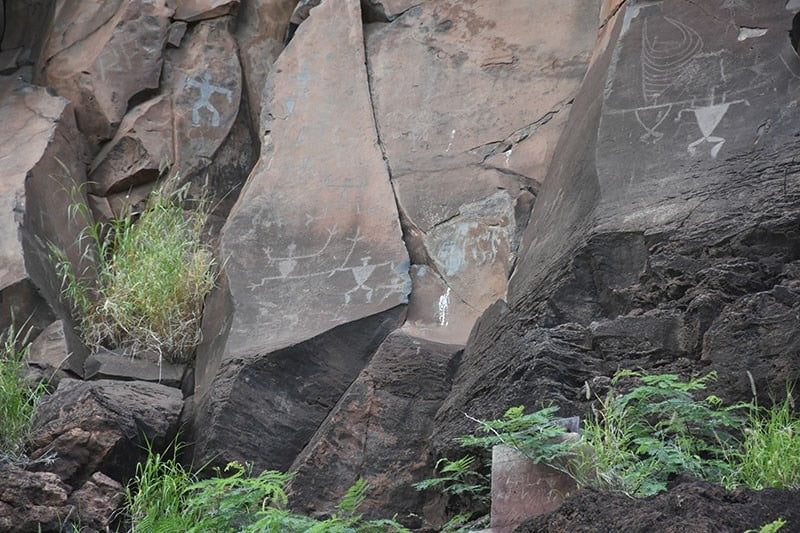
Unrecorded Histories of Hawaii
The first people known to have settle Hawaii were Polynesian, likely from the Marquesas Islands which were colonized by Polynesians around 800 AD. Islanders from Tahiti then arrived in Hawaii in a second wave, about 200 years later. The Kapu system was thus developed in a strict social hierarchy in Hawaiian society. At the top were the ali’i (nobility), followed by the kahuna (priests), maka’ainana (commoners), and kauwa (outcasts or slaves). Each group had specific rules and obligations, and there was little mobility between classes.
With them, polynesian settlers brought coconuts, bananas, taro, sweet potato, and breadfruit. They also brought and raised pigs, chicken, dogs, and the pacific rat.
Archaeologists believe that the settlers began arriving on the southern end of the big island of Hawaii and travelled northwards to colonize the rest of the islands. It is estimated that before European settlers arrived, there was close to a million inhabitants of the islands.
Hawaiian Villages
A typical Hawaiian city included many buildings:
- Heiau, temple to the gods
- Hale aliʻi, the house of the chief
- Hale pahu, the house of the sacred hula instruments
- Hale papaʻa, the house of royal storage
- Hale ulana, the house of the weaver
- Hale mua, the men’s eating house
- Hale ʻaina, the women’s eating house
- Hale waʻa, the house of the canoe
- Hale lawaiʻa, the house of fishing
- Hale noho, the living house
- Imu, the communal earth oven
The Hawaiians believed that the earth belonged to the gods; one does not own land. However, the Ali’i were managers of the land; when chiefs would die, dwellings and lands would change hands between managers.
The Kapu System
“Ancient Hawaiʻi was a caste society developed from Polynesians.” A Tahitian priest named Pā‘ao is said to have brought a new order to the islands around 1200. The new order included new laws and a new social structure that separated the people into classes. The aliʻi nui was the king, with his ʻaha kuhina just below them; the makaʻāinana (commoners) next with the kauā below them as the lowest ranking social caste.
There were several classes in the Kapu caste system:
- the Ali’i
- Kahuna
- Maka’ainana
- Kauwa
The rigidity of the kapu system might have come from a second wave of migrations in 1000–1300 from which different religions and systems were shared between Hawaiʻi and the Society Islands. Hawaiʻi would have been influenced by the Tahitian chiefs, the kapu system would have become stricter, and the social structure would have changed. Human sacrifice would have become a part of their new religious observance, and the aliʻi would have gained more power over the counsel of experts on the islands.
Ali’i were the traditional nobility of the Hawaiian Islands that were organized in a feudal way. There were eleven classes of Ali’i including ruling chiefs, prominent kahunas, advisors, and priests. Aliʻi nui were supreme ruling chiefs of the main islands, but there were several other types of chiefs with specific taboos.
The Kahuna was a wise person, or shaman, but the term really means a subject matter expert. Forty types of kahuna are listed in the book Tales from the Night Rainbow, including Hula Kahunas (hula dances included storytelling), Kahuna La’au Lapa’au (doctors and healers), and Kahuna Kilo (prophets).
The Maka’ainana were simply commoners and were subject to the taboos and rules of the Ali’i.
The Kauwa was a broad and demeaning term to describe the class of slaves, outcasts, and servants to the Ali’i. (I’ve previously written a long and extensive article of the negative aspects of the Hindu caste system, which you might find interesting.)

The Arrival of James Cook and Historical Records
Hawaii was isolated from the rest of the world for over 500 years until James Cook arrived from Britain in 1778. Cook arrived in Kaua’i in Waimea, Hawaii in 1778 and named the group of islands the sandwich islands, after the earl of sandwich (for whom sandwich were also named). Cook continued to travel around North America, then returned to the islands to restock his supplies.
in January 1779 Cook anchored in Kealakekua Bay after about 8 weeks of circling the islands; during Makahiki, the Hawaiian new year and harvest festival devoted to the god Lono. Coincidentally the form of Cook’s ship, HMS Resolution, or more particularly the mast formation, sails and rigging, resembled certain significant artifacts that formed part of the season of worship.[4][62]
Similarly, Cook’s clockwise route around the island of Hawaii before making landfall resembled the processions that took place in a clockwise direction around the island during the Lono festivals. It has been argued (most extensively by Marshall Sahlins) that such coincidences were the reasons for Cook’s (and to a limited extent, his crew’s) initial deification by some Hawaiians who treated Cook as an incarnation of Lono.[63]
After a month of exploiting his status as a deity, Cook left the Hawaiian islands only to have foremast broken. He returned to the islands to a tense atmosphere of questioning Hawaiians after a crew member of the HMS Resolution died; obviously the Hawaiians questioned how a deity could die. Cook also stole wood from a burial site. In the night of February 13th, an unknown group of Hawaiians stole one of the two longboats of the Resolution. The Hawaiians had become “insolent” so Cook’s obvious response was to kidnap and ransom the King of Hawaii, Kalaniʻōpuʻu.
On 14 February 1779, Cook marched through the village to retrieve the king. Cook took the king (aliʻi nui) by his own hand and led him away. One of Kalaniʻōpuʻu’s favourite wives, Kanekapolei, and two chiefs approached the group as they were heading to the boats. They pleaded with the king not to go. An old kahuna (priest), chanting rapidly while holding out a coconut, attempted to distract Cook and his men as a large crowd began to form at the shore. At this point, the king began to understand that Cook was his enemy.[66][failed verification] As Cook turned his back to help launch the boats, he was struck on the head by the villagers and then stabbed to death as he fell on his face in the surf.[67] He was first struck on the head with a club by a chief named Kalaimanokahoʻowaha or Kanaʻina (namesake of Charles Kana’ina) and then stabbed by one of the king’s attendants, Nuaa.[68][69] The Hawaiians carried his body away towards the back of the town, still visible to the ship through their spyglass. Four marines, Corporal James Thomas, Private Theophilus Hinks, Private Thomas Fatchett and Private John Allen, were also killed and two others were wounded in the confrontation.[68][70]
King Kamehameha I and the Birth of the Kingdom of Hawaii
Kamehameha was raised in the royal Hawaiian court and was given the prominent religious position as guardian of the Hawaiian god of war. He rose to higher prominence from several religious rituals and gained the support of 5 Kona chieftains and two uncles who bypassed the throne for their nephews, Kamehameha and Kīwalaʻō (who was to be the next great chief). Kīwalaʻō’s half brother received no land nor title and took out his rage on Kamehameha. The Battle of Mokuʻōhai ensued in 1782; the battleground was just to the south of Kealakekua Bay during which Kīwalaʻō was knocked down by a sling stone, and the injured Kameʻeiamoku was able to slit his throat with a shark-tooth dagger. Kamahameha recovered Kīwalaʻō feather cloak giving Kamehameha religious, political, and divine authority in the eyes of Hawaiians. This is known as a key turning point in Hawaii’s history and marks the beginning of the unification of the islands.
In 1790 Kamehameha’s army invaded Maui with the assistance of John Young and Isaac Davis. Using cannons from the Fair American, they defeated Maui’s army led by Kalanikūpule at the bloody Battle of Kepaniwai while the aliʻi Kahekili II was on Oahu.
Keōua Kūʻahuʻula, who came to rule the districts of Kaʻū and Puna, took advantage of Kamehameha’s absence in Maui and began raiding the west coast of Hawaii. He also advanced against the district of Hilo, deposing his uncle Keawemaʻuhili.[28][26] When Kamehameha returned, Keōua escaped to the Kīlauea volcano, which erupted. Many warriors died from the poisonous gas emitted from the volcano.
When the Puʻukoholā Heiau was completed in 1791, Kamehameha invited Keōua to meet with him. Keōua may have been dispirited by his recent losses. He may have mutilated himself before landing so as to render himself an inappropriate sacrificial victim. As he stepped on shore, one of Kamehameha’s chiefs threw a spear at him. By some accounts, he dodged it but was then cut down by musket fire. Caught by surprise, Keōua’s bodyguards were killed. With Keōua dead, and his supporters captured or slain, Kamehameha became King of Hawaiʻi island.[29]
In 1791, Kahekili and his brother Kāʻeokūlani reconquered Maui and also acquired cannons. In April or May 1791, Kahekili tried to invade the island of Hawaiʻi, but was defeated in a naval battle called Kepuwahaʻulaʻula near Waipiʻo. Kamehameha had to wait for the civil war that broke out in 1793 after the death of Kahekili to finally win control of Maui.[27]
In summer 1795, Kamehameha set sail with an armada of 960 war canoes and 10,000 soldiers. He quickly secured the lightly defended islands of Maui and Molokaʻi at the Battle of Kawela and later Oahu.
The Battle of Nuʻuanu was a fierce and brutal conflict, with warriors on both sides using traditional Hawaiian weapons like spears and clubs, along with firearms and cannons acquired from European contacts. The turning point of the battle occurred when Kamehameha’s forces managed to drive the Oahu warriors to the edge of the cliff. With nowhere to escape, many of the Oahu warriors either jumped off the cliffs to their deaths or were pushed off by Kamehameha’s warriors.
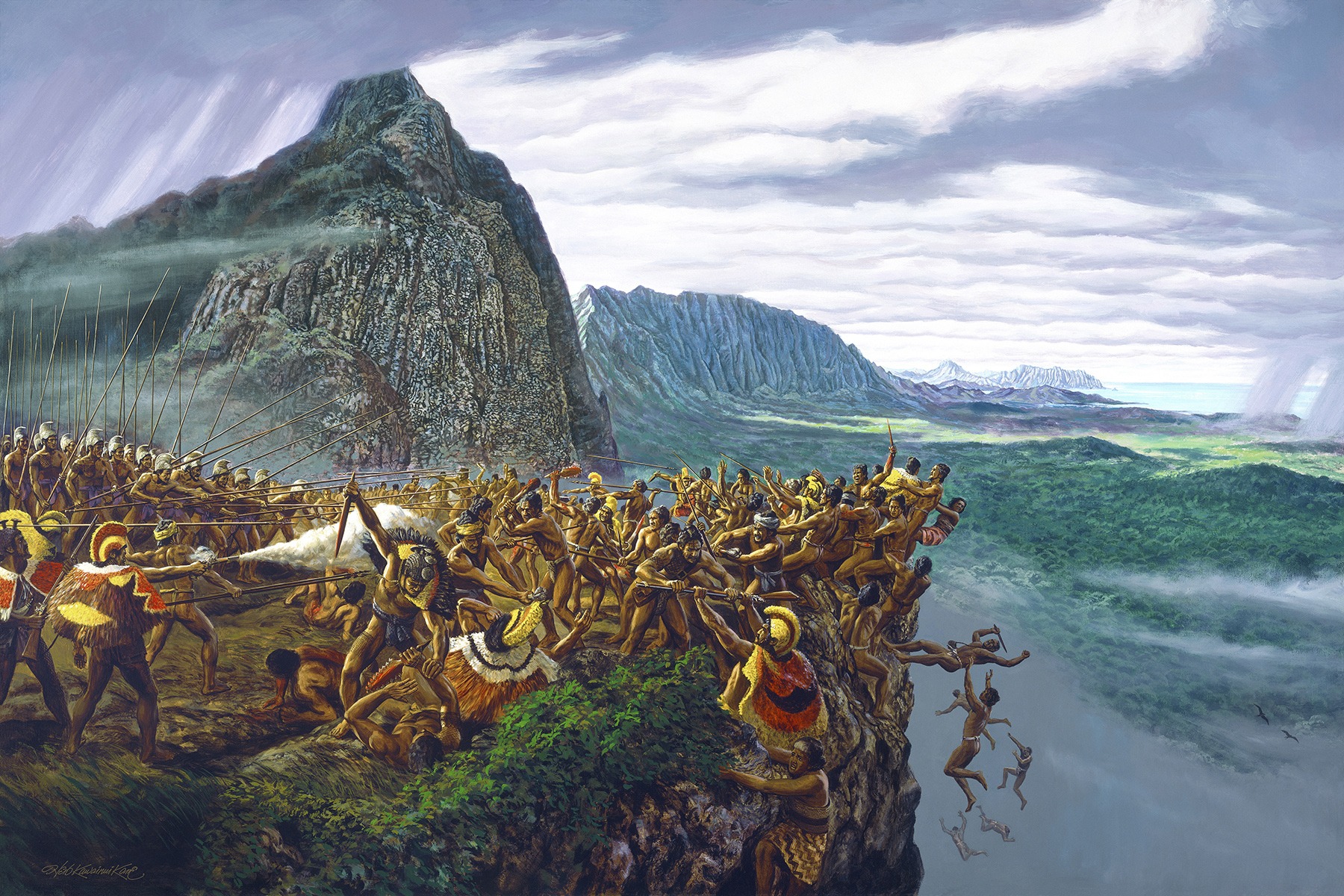
In the spring of 1796, he attempted to continue with his forces to Kauaʻi but he lost many of his canoes in the strong winds and rough seas of the Kaʻieʻie Waho channel. He returned to Hawaii to pacify the rebellion of Nāmakehā (brother of Kaʻiana) in Hilo and ruled from Hawaii for the next six years as he consolidated his conquests and prepare for a second invasion of Kauaʻi.[32] At Hilo, Kamehameha I commissioned the building a large fleet of 800 (according to Kamakau) double-hulled war canoes called peleleu along with Western schooners, and he also stockpile large number of guns, canons and ammunition. He took his peleleu to Maui where he stayed from 1802 to 1803 and then to Oʻahu in late 1803 or early 1804. While in Oʻahu, a large percentage of his force was killed by the maʻi ʻokuʻu epidemic, which was thought to be either cholera or bubonic plague. Kamehameha I contracted the illness but survived. The second invasion of Kauaʻi was postponed.
In April 1810, Kamehameha I negotiated the peaceful unification of the islands with Kauaʻi. He also created a unified legal system and collected taxes to promote trade with Europe and the United States.
After about 1812, Kamehameha returned from Oahu and spent the last years of his life at Kamakahonu, a compound he built in Kailua-Kona.[38][39]
When Kamehameha died on May 8 or 14, 1819,[41][42][43] his body was hidden by his trusted friends, Hoapili and Hoʻolulu, in the ancient custom called hūnākele (literally, “to hide in secret”). The mana, or power of a person, was considered to be sacred. As per the ancient custom, his body was buried in a hidden location because of his mana. His final resting place remains unknown. And yes, Goku’s signature energy attack is named after the Hawaiian king because the creator, Akira Toriyama’s wife suggested it.
Kamehameha I was succeeded by his son, Kamehameha II (Liholiho). Liholiho’s reign was relatively short, marked by his involvement in the abolition of traditional Hawaiian religious practices in favor of Christianity, a decision influenced by the influence of Christian missionaries.
After Kamehameha II’s death in 1824, his younger brother, Kamehameha III (Kauikeaouli), ascended the throne. Kamehameha III’s reign was characterized by the formalization of Hawaii’s legal system, the issuance of the Hawaiian Constitution of 1840, and continued efforts to modernize the kingdom’s government and economy.
Kamehameha IV (Alexander Liholiho) succeeded Kamehameha III in 1855. His reign saw further attempts at modernization and political reforms. He also established the Queen’s Medical Center, a prominent medical institution in Hawaii.
Kamehameha V (Lot Kapuāiwa) took the throne in 1863 and is known for his strong and somewhat autocratic rule. He attempted to strengthen the monarchy’s power, although some of his proposed constitutional reforms were not enacted during his lifetime.
After Kamehameha V’s death, King Lunalilo was elected as king by the Hawaiian legislature in 1873. His reign was brief, as he died in 1874 without naming an heir. David Kalākaua, who was elected by the Hawaiian legislature, succeeded Lunalilo. Kalākaua’s reign was marked by the signing of the Reciprocity Treaty with the United States in 1875, which allowed Hawaiian sugar to be exported to the U.S. duty-free. Kalākaua’s sister, Liliʻuokalani, succeeded him in 1891 as the last reigning monarch of Hawaii. Her reign was marked by political tensions and efforts to regain some of the monarchy’s authority that had been eroded over time.
Overthrow of the Hawaiian Monarchy
The monarchy’s power had been steadily diminishing due to foreign influence, economic interests, and internal political struggles. In 1893, Liliʻuokalani’s attempt to promulgate a new constitution and regain power led to the overthrow of the Hawaiian monarchy by a group of American and European businessmen and diplomats, with the support of U.S. troops.
Foreign influence dominated the islands because of interests in the islands fertility and ability to produce agriculture. Sugar cane had been introduced to the islands by the Polynesians; European and American merchants established sugar plantations taking advantage of the native Hawaiian workforce and the fertility of the islands. The Kamehameha dynasty was also intrinsic in developing the sugar plantations to promote trade development.
The combination of the growth of christianity and the sugar cane industry led foreign interests to dominate the Hawaiian economy.
On January 20, 1887, the United States began leasing Pearl Harbor. Shortly after, the Hawaiian Patriotic League began the revolution of 1887; they drafted a constitution that greatly lessened the powers of the Hawaiian monarchy and forced the chief, Kalākaua to sign it. In July 1889, there was a small scale rebellion, and Minister Merrill landed Marines to protect Americans; the State Department explicitly approved his action. Kalākaua died in San Francisco on January 20th, 1891.
Liliʻuokalani assumed the throne in the middle of an economic crisis. Her proposed 1893 Constitution would have extended suffrage by reducing some property requirements. It would have disenfranchised many non-citizen Europeans and Americans. The Queen toured several islands on horseback, talking to the people about her ideas and receiving overwhelming support, including a lengthy petition in support of a new constitution. However, when the Queen informed her cabinet of her plans, they withheld their support, uncomfortable with what they expected her opponent’s likely response to be.[153]
Liliʻuokalani’s attempt to promulgate a new constitution on January 14, 1893, was the precipitating event leading to the overthrow of the Kingdom of Hawaii three days later.[154] The conspirators’ stated goals were to depose the queen, overthrow the monarchy, and seek Hawaii’s annexation to the U.S.[155][156] The conspirators were five American, one English and one German national.[157]
The overthrow began on January 17, 1893. While the queen was on house arrest, a military coup took over the capital and intimidate royalist defenders, even though a shot wasn’t fired. This was the effective end of the monarchy.
Between 1893 and 1898 annexation became an increasingly popular idea.
In March 1897, William McKinley, a Republican expansionist, succeeded Democrat Grover Cleveland as U.S. president. He prepared a treaty of annexation but it lacked the needed 2/3 majority in the Senate given Democratic opposition.
McKinley signed the Newlands Resolution annexing Hawaii on July 7, 1898, creating the Territory of Hawaii. On 22 February 1900 the Hawaiian Organic Act established a territorial government. Annexation opponents held that this was illegal, claiming the Queen was the only legitimate ruler. McKinley appointed Sanford B. Dole as territorial governor. The territorial legislature convened for the first time on February 20, 1901. Hawaiians formed the Hawaiian Independent Party, under the leadership of Robert Wilcox, Hawaii’s first congressional delegate.
Sugarcane plantations by this time had grown so large and powerful that the owners dominated the industry of Hawaii and were known as “the big five”. During the Democratic Revolution of 1954, the unions inflicted a decisive blow against the giants, and when the sugar industry declined after Hawaii became a state in 1959, so did each of the Big Five companies. There was also intense competition from overseas, leading to the decline of the Hawaiian sugar industry. The last sugar plantation closed in 2016, ending the sugarcane industry in Hawaii.
The Evolution of Ecology in Hawaii
Born among volcanoes in the north central Pacific about 4 million years ago, the Hawaiian rainforest became assembled from spores of algae, fungi, lichens, bryophytes, ferns and from seeds of about 275 flowering plants that over the millennia evolved into ca. 1000 endemic species. There was a time before human existence on the islands, when only birds and flora lived on the island due to dispersal or migratory patterns over the ocean.
The isolation of the islands resulted in Adaptive Radiation, meaning that a single ancestor gave birds to multitudes of species adapted to the various microclimates and ecologies of the islands. This led to an incredible number of unique species on the islands, also known as endemism.
The Polynesians were the first to introduce various agricultural species and brought with them the first invasive and non-native species present on the islands today. The later European explorers compounded this issue with disease and the introduction of more non-native and invasive species. Only recently have conservation efforts been made to preserve native species and remove invasive ones.
Major Invasive species in Hawaii

- Miconia (Miconia calvescens): Miconia is a highly invasive plant species in Hawaii. It forms dense thickets that outcompete native vegetation and disrupt the natural ecosystem.
- Coqui Frog (Eleutherodactylus coqui): The coqui frog is a small, nocturnal frog that is native to Puerto Rico but has become invasive in Hawaii. Its loud calls have caused noise pollution and ecological disruption.
- Little Fire Ant (Wasmannia auropunctata): This invasive ant species has a painful sting and can negatively impact native insect populations. It is a significant nuisance for residents and threatens agriculture.
- Kahili Ginger (Hedychium gardnerianum): Kahili ginger is an invasive plant that has spread throughout Hawaiian forests. It displaces native species and changes the structure of forest ecosystems.
- Yellow Ginger (Hedychium flavescens): Yellow ginger, another invasive ginger species, is known for its rapid spread in Hawaii. It can outcompete native plants and alter the composition of natural habitats.
- Australian Tree Fern (Sphaeropteris cooperi): This invasive fern species can form dense thickets and compete with native vegetation in Hawaii’s forests and understory.
- Africanized Honeybee (Apis mellifera scutellata): This aggressive strain of honeybee is considered invasive in Hawaii and has had an impact on local bee populations.
- Christmas Berry (Schinus terebinthifolius): Christmas berry is a small tree with invasive tendencies. It has invaded a variety of habitats in Hawaii, including forests and coastal areas.
- Feral Pigs (Sus scrofa): Feral pigs are a significant invasive species in Hawaii. They damage native ecosystems by rooting in the soil, uprooting plants, and spreading invasive seeds.
- Axis Deer (Axis axis): Axis deer were introduced to Hawaii for hunting purposes. They have become invasive and cause damage to agriculture and natural habitats.
- Strawberry Guava (Psidium cattleianum): Strawberry guava is an invasive plant that forms dense thickets, outcompeting native vegetation.
- Red-vented Bulbul (Pycnonotus cafer): This invasive bird species has established itself in Hawaii, affecting native bird populations and agricultural crops.
- Invasive Algae (e.g., Gracilaria salicornia and Acanthophora spicifera): Various invasive algae species have proliferated in Hawaii’s coral reefs, impacting native marine life and altering reef ecosystems.
Major Native species Endemic to Hawaii
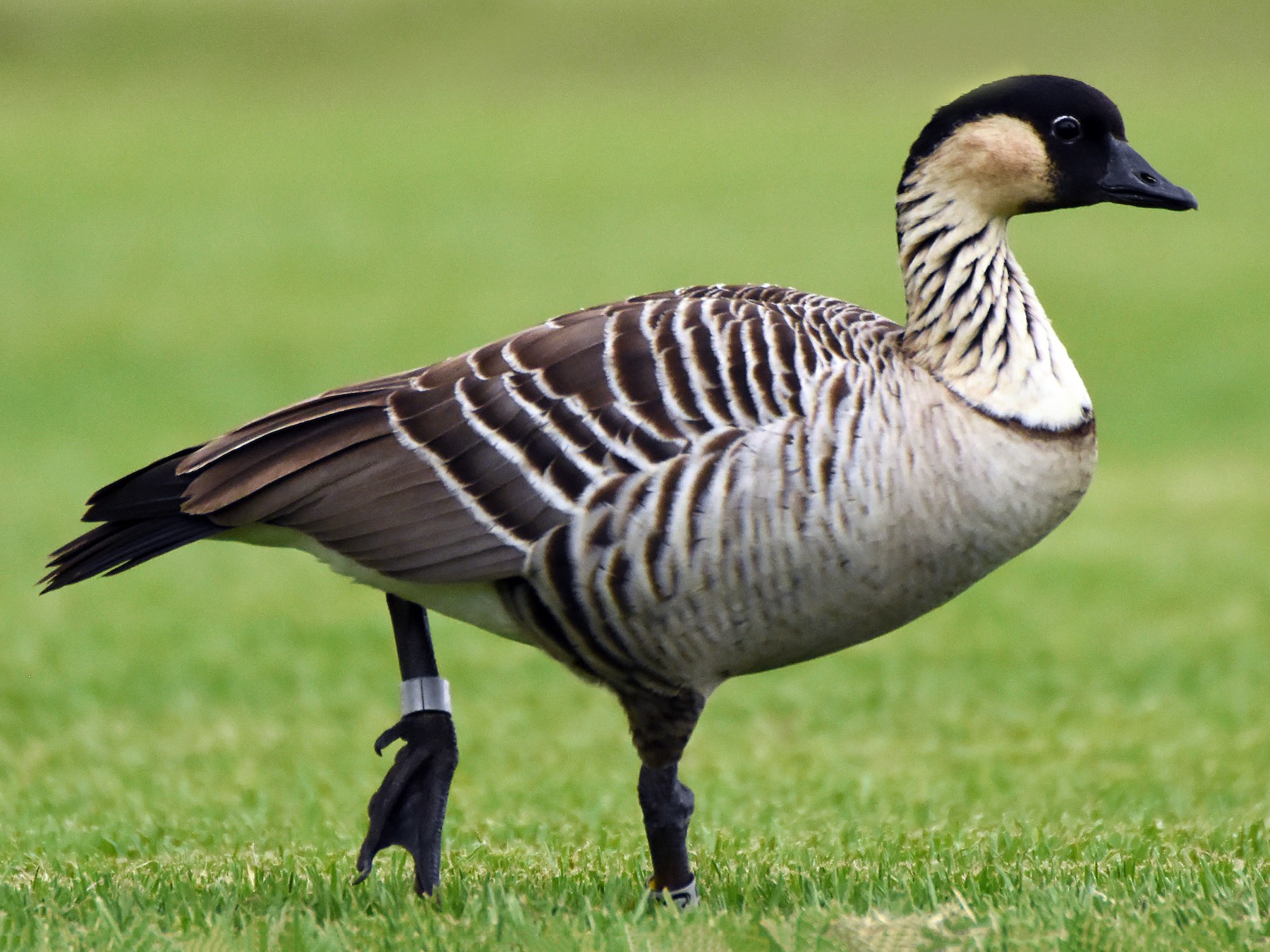
Hawaiian Monk Seal (Monachus schauinslandi): The Hawaiian monk seal is one of the world’s most endangered seal species. It is endemic to the Hawaiian Islands and faces threats from human disturbance, entanglement in marine debris, and habitat loss.
Hawaiian Nēnē (Branta sandvicensis): The nēnē, or Hawaiian goose, is the world’s rarest goose and is endemic to Hawaii. It faces threats from habitat destruction, predation, and collisions with vehicles.
Alalā (Corvus hawaiiensis): The ʻalalā, or Hawaiian crow, is critically endangered and is extinct in the wild. Conservation efforts aim to reintroduce captive-bred birds into their native habitat on the Big Island.
Hawaiian Hoary Bat (Lasiurus cinereus semotus): This endemic bat species is threatened by habitat destruction and disturbances, particularly in its roosting sites.
Hawaiian Petrel (Pterodroma sandwichensis): The Hawaiian petrel is a seabird that faces threats from introduced predators and habitat degradation, particularly in its nesting areas.

Hawaiian Tree Snails (Achatinella spp.): Many species of Hawaiian tree snails are critically endangered or extinct due to habitat loss, invasive predators, and disease.
Hawaiian Silversword (Argyroxiphium sandwicense): Silverswords are a group of plants endemic to Hawaii. Several species are endangered due to habitat destruction and damage caused by introduced herbivores.
Puaiohi (Myadestes palmeri): The puaiohi is a critically endangered thrush endemic to Kauai. It is threatened by habitat destruction and invasive species.
‘Ohi’a lehua (Metrosideros polymorpha): a species of flowering evergreen tree in the myrtle family, Myrtaceae, that is endemic to the six largest islands of Hawaiʻi. It is a member of the diverse Metrosideros genus, which are widespread over the southwest Pacific. It is the state tree of Hawai‘i.[4]
Manfern (Cibotium): a genus of 11 species of tropical tree ferns
False staghorn fern (Dicranopteris linearis): one of the most widely distributed ferns of the wet Old Worldtropics and adjacent regions, including Polynesia and the Pacific.[3]
References
- Earth@home.org – the Geologic History of Hawaii
- Wikipedia.org – History of Hawaii
- bg.copernicus.org – Origin of Hawaiian Rainforest
- TheSupernaturalFoxSisters.com – The Mysterious Menehune of Hawaii
- Punahou Buletin – Kamahameha I
- Chat GPT

